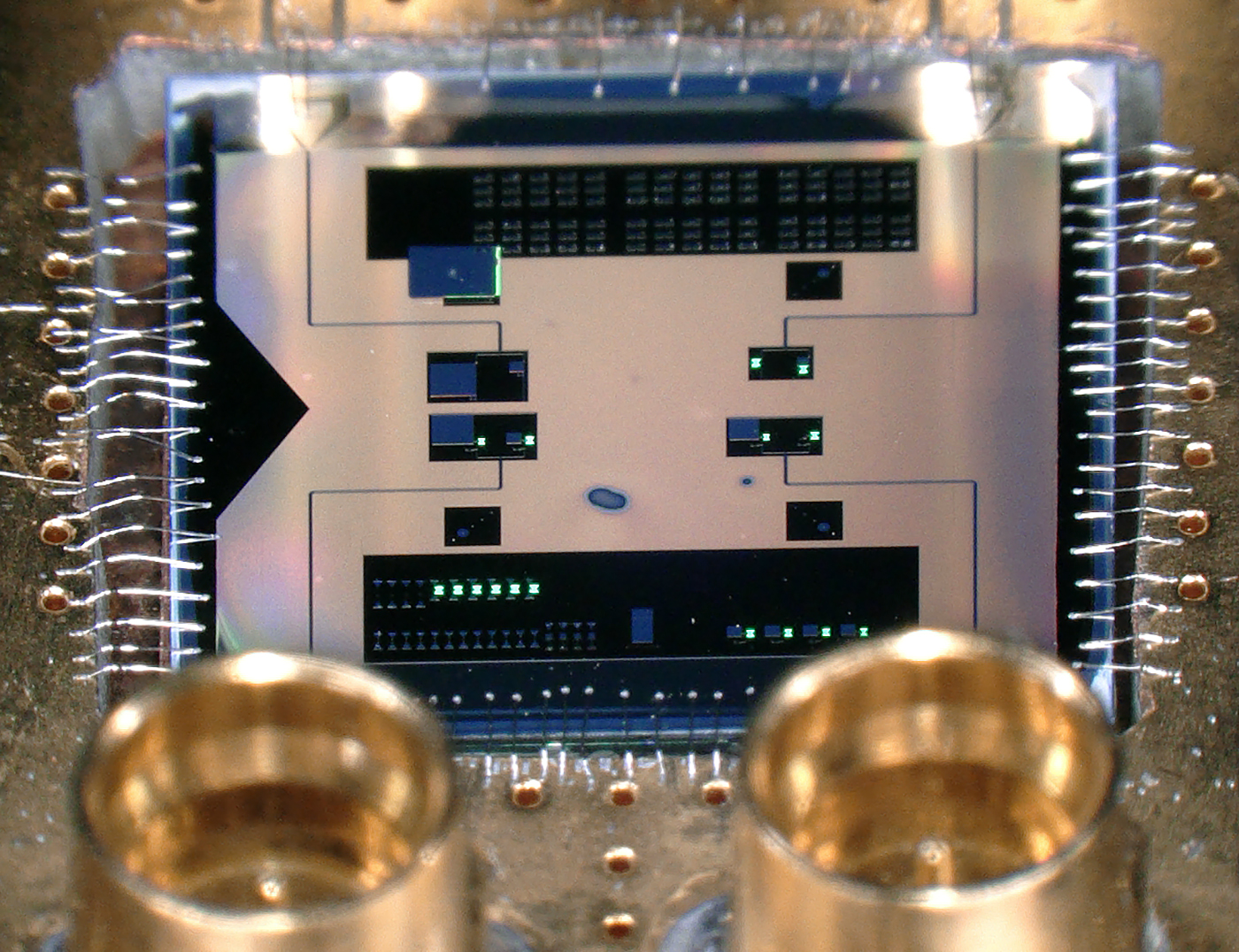By listening to the output, one can count the quanta coming in. TU Delft researchers presented the world’s most sensitive MHz radio in Science.
Those of us born in the analogue age know that a radio in its simplest form is an LC circuit (capacity and coil) with a diode. By connecting a headphone over the diode, you can hear the AM radio signals on the frequency on which the circuit is tuned (given by the product of L and C).
The device that PhD candidate Mario Gely has developed in the lab of Professor Gary Steele (Faculty of Applied Sciences) combines two such simple circuits. One is tuned to the MHz range (typical FM radio), the other in the GHz range with a quantum bit as a diode.
It has taken them eight months to get all the components squished together in one 10 by 10 millimetre chip. In fact, the chip contains four circuits and some spare parts. After all, you never know.


Sufficiently shielded from the outside world and under cryogenic conditions, the researchers saw the resonance frequency in the qubit change step-by-step with each MHz quantum that reached the antennas.
“By listening to the quantum bit, you can tell the number of MHz quanta,” explains an enthusiastic Dr Steele. This was the first time that anyone had demonstrated the quantisation of radio waves.
Why did they develop such a sensitive receiver in the first place? That comes from a quantum pitchfork that Steele’s group has built. The oscillating beam is about 100 nanometres thick and the amplitude is about 0.00001 nanometre, or roughly the size of a proton.
The mechanical MHz vibrations will be converted into electronic oscillations. But obviously, the signal will be very small. The MHz quantum receiver was developed as the lab’s tool for listening to the quantum pitchfork.
As often happens, fundamental science brings practical spin-offs. Ultra-sensitive MHz receivers are also sought-after in MRI imaging (medical imaging) and in radio astronomy.
Steele thinks that the freshness of their approach (jamming two circuits together), together with the demonstration of the quantisation of electromagnetic radiation in the MHz range, has convinced the referees of their worthiness in being published in Science.
- Mario F. Gely, Marios Kounalakis, Christian Dickel, Jacob Dalle, Rémy Vatré, Brian Baker, Mark D. Jenkins, Gary A. Steele, Observation and stabilization of photonic Fock states in a hot radio-frequency resonator, Science, 7 March 2019
Do you have a question or comment about this article?
j.w.wassink@tudelft.nl


Comments are closed.